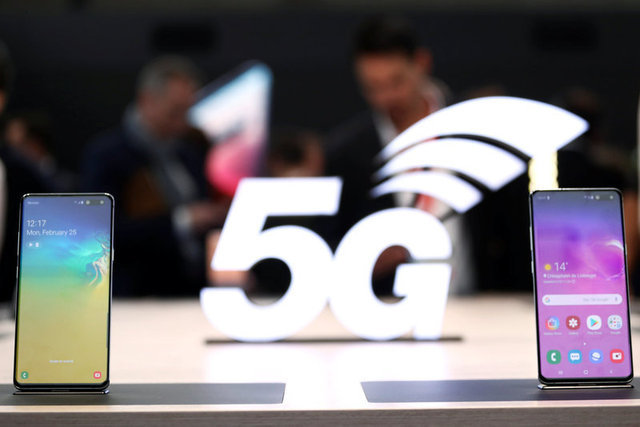 |
|
The Samsung Galaxy S10 5G
|
Electronics giant didn’t update phones until a month after launch
In its rush to release the world’s first 5G smartphone, Samsung Electronics used a communications chip based on outdated standards and didn’t finish updating the phones until a month after launch, the Hankyoreh has confirmed. Since the update wasn’t mandatory, tens of thousands of users are presumably still using the old software. Some think that this, along with the instability of the telecommunication network, caused the initial hiccups in 5G service. According to industry sources who spoke with the Hankyoreh on June 5, Samsung Electronics finally updated the chip specifications for its telecommunication modems on May 10–14 — the same modems it had used for the “world’s first” 5G phones, launched back in April. Samsung Electronics explained that 90% of users for its Galaxy S10 5G had downloaded software based on the updated specifications. Considering that 230,000 units of the company’s 5G device were sold in April, that means at least 23,000 people have yet to receive the update. While the 3rd Generation Partnership Project, an organization that creates standards for telecommunications, had released standards first in September 2018 and then again in December 2018, Samsung Electronics created the chips based on the September standards, which are more prone to telecommunications failures and less compatible with other kinds of communications equipment than the new standards. Samsung Electronics’ adoption of the September standards has been controversial since last year. For the convenience of business operators, 3GPP creates and releases standards for each new generation of telecommunications. After a number of problems were discovered in the standards released last September, the organization released new standards in December that implemented more than 50 corrections. While the majority of companies in the market pivoted to the latest standards, Samsung Electronics, which was facing steep competition for telecommunications modem chips from Qualcomm, took the unusual step of sticking with the September standards. Samsung took this move to ensure that it would be able to launch the “world’s first” 5G chip and 5G phone. “There were calls to go with the new standards, since the company would have update them sooner or later, but what I hear is that the old standards were adopted because of pressure from the government and certain business operators. Implementing the new standards would only have required a single month’s delay. And sure enough, the update did in fact improve telecommunications quality,” said one source in the industry. September chips not as fast and smooth The fact is that there are distinct differences between the two standards. According to industry experts, chips based on the September standards are slower and less adept at catching faint signals than chips based on the December standards. While the older chips are still compatible with telecommunications equipment by Ericsson and Nokia based on the December standards, service isn’t as smooth as when the standards are the same, and the connection is liable to cut out occasionally. This different wouldn’t have been perceptible to consumers if 5G had been universally adopted at that point, but since the new service was just being launched, there was a clear difference. In the end, consumers who bought the Galaxy S10 5G in April had basically spent 1.4 million won (US$1,186) on chips running on outdated specifications. While Samsung Electronics underlined the fact that it updated to the new standards within just one month of launch, it certainly could have opted to use the new standards back in February. As soon as the new standards were released in December, telecommunications equipment companies analyzed the new standards and announced the sections they would adopt in February. As a manufacturer of telecommunications equipment and telecommunications modem chips, Samsung Electronics also had an opportunity to make such a choice, but it shoved aside the new standards so that it could meet its planned launch date of Mar. 28. In contrast, Qualcomm moved to redesign its 5G chip based on the new standards. Although the poor performance at the outset of 5G service was largely due to instability in the telecommunication network, Samsung Electronics’ rush to claim the title of “world’s first” was another reason for an unrealistic sales pitch. “It’s unprincipled to release a phone that’s based on outdated standards and already scheduled for an update as a high-price product rather than a test phone. Samsung ought to have let consumers know about this and asked them for their understanding,” said Han Hyeon-bae, director of the Korea Public Interest Telecommunications Cooperative. By Shin Da-eun, staff reporter Please direct comments or questions to [english@hani.co.kr]






